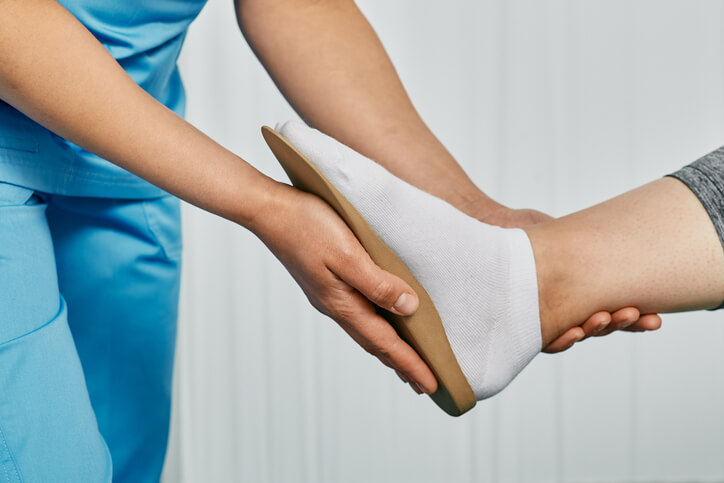Some health conditions are very isolated. For instance, breaking your pinky will likely affect only your pinky and perhaps some nearby areas in your hand. A condition like flat feet, however, can affect more than just your feet. This article will explain how flat feet can impact other aspects of your health.
About Flat Feet
Flat feet, the English translation of the Latin term pes planus, occurs when the entire soles of your feet touch the floor when you stand. This occurs because the arches of your feet have “fallen” due to factors including obesity, injury, and arthritis. The main support for the arch is the posterior tibial tendon, which runs along the inside of the ankle from just above the joint to the arch. When the tendon is damaged, the arch may lose support and “fall,” appearing flattened.
How Flat Feet Affects Your Overall Health
Pain is not always a symptom of flat feet, and many patients might not know they have the condition. However, you may be affected by other conditions that you might not realize are caused or made worse by flat feet.
The reason for this is the arches of your foot play an important role in weight-bearing. When you stand, your body weight is supported by the bones in your feet, and your arches help distribute the weight so you can maintain balance and not have too much weight on any part of your feet. When this balance is off, you may have pain, swelling, or tiredness in different areas of your feet.
In addition, your flat feet could lead to other foot problems including:
- Arthritis — You have more than 30 joints that connect the bones in your foot and ankle, and they also help keep your body stable. Flat feet can cause damage and stiffness to these joints.
- Bone spurs — The extra pressure or arthritis caused by flat feet can result in the growth of bony growths (spurs) that cause pain and stiffness.
- Bunions — Flat feet may cause some of the bones in the front area of your foot to move out of alignment. This in turn can cause the formation of a bony bump at the base of your big toe, which then gets pulled toward the smaller toes and forces the joint at the base of your big toe to stick out. This results in pain and stiffness in the area.
- Corns and calluses — These are thick layers of skin that build up in areas of your body (usually the hands and feet) due to friction or irritation of the skin. Corns tend to be small and round, resembling the vegetable for which they’re named, and often appear on the tops or sides of your toes. Calluses are larger, irregularly shaped, and appear on the bottom of your feet.
- Plantar fasciitis — This is a common heel condition that causes pain because of inflammation in the band of tissue running along the bottom of your foot that connects the toes to the heel bone.
In addition, flat feet can cause excessive pronation, which is when most of the weight of your foot rolls inward. Pronation is a normal part of walking, but overpronation can shift your body’s alignment and cause a chain reaction of problems to other parts of your body:
- When your foot rolls inward, your knees can rotate in ways they shouldn’t, or you can get shin splints.
- The knee rotation will twist your spine.
- The changes to your spine can cause pain in your neck.
If you experience any of these symptoms, such as balance problems, pain or difficulty walking, or stiffness in your feet, or if you discover your arches appear to have fallen, you should seek medical attention.
Contact Our NJ Orthopedic Foot Surgeon About Flat Feet
Schedule an appointment with our NJ orthopedic foot surgeon today about repairing flat feet.
